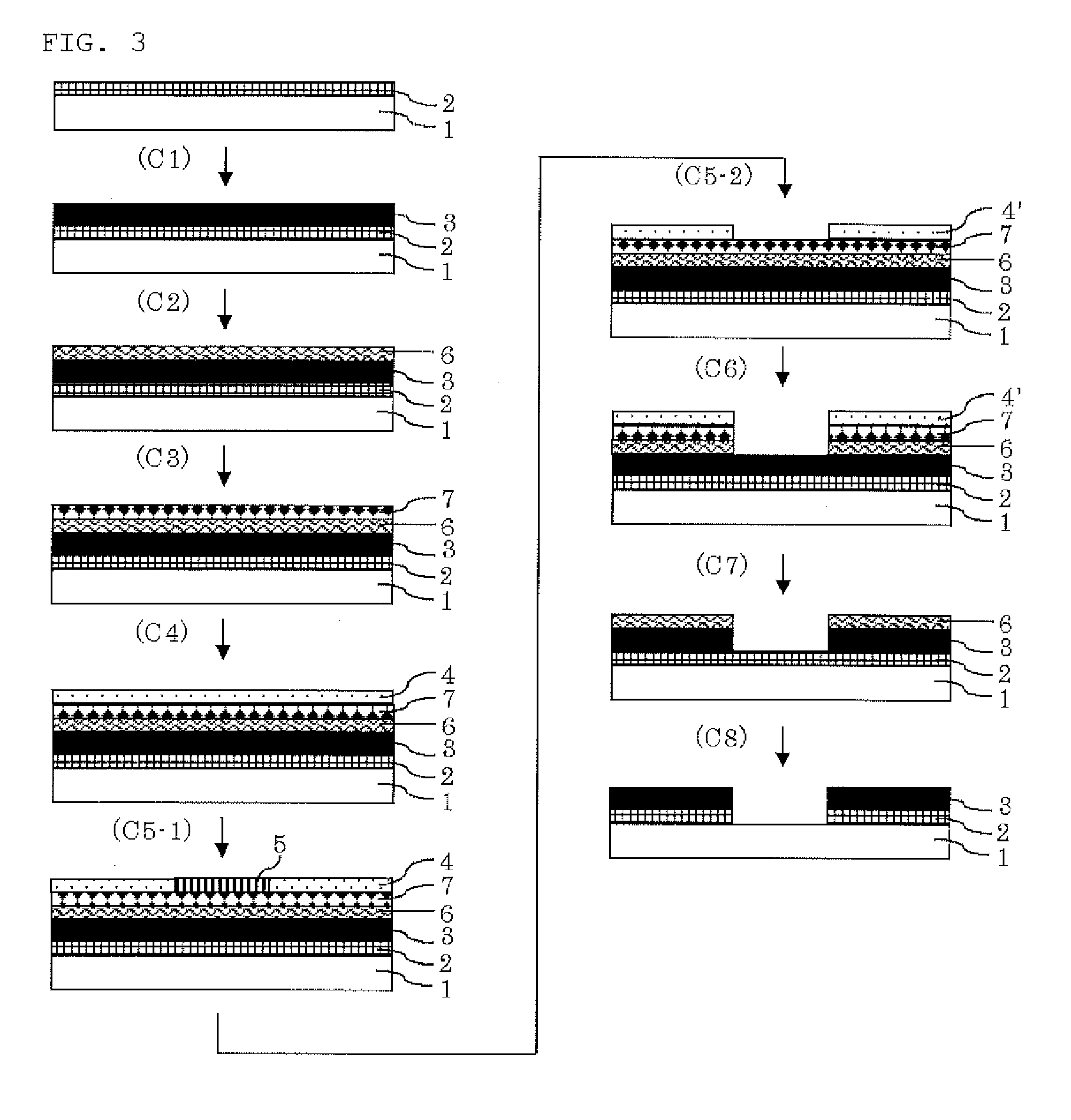Resist underlayer film compostion, patterning process, and compound
a technology of patterning process and underlayer film, applied in the field of resisting underlayer film composition, can solve the problem of more outgas generated, and achieve the effect of high heat resistance, low outgas generation, and excellent filling property
- Summary
- Abstract
- Description
- Claims
- Application Information
AI Technical Summary
Benefits of technology
Problems solved by technology
Method used
Image
Examples
synthesis example 1
Synthesis of Compound X1
[0136]
[0137]10.0 g of indeno[1,2-b]fluorene-6,12-dione, 40.9 g of 2-naphthol, and 150 mL of 1,2-dichloroethane were mixed to form a homogeneous solution at 50° C. in a nitrogen atmosphere. 16.1 g of methanesulfonic acid and 1.3 g of 3-mercaptopropionic acid were added dropwise thereto gently, and the mixture was stirred under heating at 60° C. for 6 hours. After cooling to room temperature, 300 g of methyl isobutyl ketone and 100 g of pure water were added thereto. An insoluble matter was then removed by filtration, the water layer was removed, and the organic layer was washed with 100 g of pure water four times. After washing, the organic layer was evaporated under reduced pressure to dryness and dissolved in 100 g of ethyl acetate. Then, it was added to 400 g of methanol to precipitate a crystal. The crystal was collected by filtration with Kiriyama funnel, washed with 100 g of methanol twice, and then dried at 60° C. under vacuum to obtain 20.3 g of Compou...
synthesis example 2
Synthesis of Compound X2
[0142]
[0143]5.0 g of Compound X1, 22.5 g of epichlorohydrin, 0.05 g of tetraethylammonium chloride, and 40 g of tetrahydrofuran were mixed to form a homogeneous solution at 50° C. in a nitrogen atmosphere. After the solution was stirred at 50° C. for 6 hours, 5.0 g of sodium hydroxide was added dropwise thereto, and the solution was further stirred for 12 hours. After cooling to room temperature, 200 g of methyl isobutyl ketone and 100 g of pure water were added thereto. The water layer was then removed, and the remainder was washed with 100 g of pure water five times. After washing, the organic layer was evaporated under reduced pressure to dryness and dissolved in 40 g of methyl isobutyl ketone. Then, it was added to 200 g of diisopropyl ether to precipitate a crystal. The crystal was collected by filtration with Kiriyama funnel, washed with 80 g of diisopropyl ether twice, and then dried at 60° C. under vacuum to obtain 5.3 g of Compound X2 shown by the ab...
synthesis example 3
Synthesis of Compound X3
[0144]
[0145]10.0 g of indeno[1,2-b]fluorene-6,12-dione, 26.7 g of phenol, and 120 mL of 1,2-dichioroethane were mixed to form a homogeneous solution at 50° C. in a nitrogen atmosphere. Then, 17.8 g of methanesulfonic acid and 1.5 g of 3-mercaptopropionic acid were added dropwise thereto gently, and the mixture was stirred under heating at 60° C. for 6 hours. After cooling to room temperature, 300 g of methyl isobutyl ketone and 100 g of pure water were added thereto. An insoluble matter was then removed by filtration, the water layer was removed, and the organic layer was washed with 100 g of pure water four times. After washing, the organic layer was evaporated under reduced pressure to dryness and dissolved in 80 g of ethyl acetate. Then, it was added to 320 g of toluene to precipitate a crystal. The crystal was collected by filtration with Kiriyama funnel, washed with 100 g of toluene twice, and then dried at 60° C. under vacuum to obtain 19.3 g of Compoun...
PUM
| Property | Measurement | Unit |
|---|---|---|
| heat resistance | aaaaa | aaaaa |
| heat resistance | aaaaa | aaaaa |
| temperature | aaaaa | aaaaa |
Abstract
Description
Claims
Application Information
 Login to View More
Login to View More - R&D
- Intellectual Property
- Life Sciences
- Materials
- Tech Scout
- Unparalleled Data Quality
- Higher Quality Content
- 60% Fewer Hallucinations
Browse by: Latest US Patents, China's latest patents, Technical Efficacy Thesaurus, Application Domain, Technology Topic, Popular Technical Reports.
© 2025 PatSnap. All rights reserved.Legal|Privacy policy|Modern Slavery Act Transparency Statement|Sitemap|About US| Contact US: help@patsnap.com



